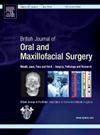Health-related quality of life among patients undergoing jaw resection at a referral hospital in Western Kenya
IF 1.7
4区 医学
Q3 DENTISTRY, ORAL SURGERY & MEDICINE
British Journal of Oral & Maxillofacial Surgery
Pub Date : 2025-04-01
DOI:10.1016/j.bjoms.2025.01.002
引用次数: 0
Abstract
In many developing countries, successful care for patients with jaw tumours often focuses on morbidity and survival rates. Limited attention is accorded to the impact of the disease and its treatment on patients’ health-related quality of life (HRQoL). This study evaluated HRQoL among patients before and in the short term following jaw resection as treatment for oral tumours using the University of Washington quality of life (UW-QoL) questionnaire. Forty participants were consecutively recruited over a period of two years; 70% of whom were female, 75% had mandibular lesions and half of them had ameloblastoma. Their mean age was 34.4 years. Participants returned high scores on most of the 12 disease-specific domains, suggesting a low level of dysfunction. Shoulder dysfunction, taste and speech returned the best scores, whereas chewing, appearance, and saliva returned the lowest scores. Saliva had reduced scores after surgery, with an increase in proportion of participants who reported it as an important issue. Mean scores for physical functions were lower than were for socio-emotional functions. Surgical care had a positive impact on socio-emotional functions such as activity, mood and recreation, but with a negative impact on physical functions such as chewing, swallowing, and saliva. Male patients as well as patients with benign and mandibular tumours returned higher scores when compared with female patients as well as patients with malignant and maxillary tumours, respectively. This study revealed important changes in the HRQoL of patients with jaw tumours in Kenya, which ought to be considered during their care.
肯尼亚西部一家转诊医院接受下颌切除术患者的健康相关生活质量
在许多发展中国家,对颌骨肿瘤患者的成功护理往往侧重于发病率和生存率。人们对该病及其治疗对患者健康相关生活质量(HRQoL)的影响关注有限。本研究使用华盛顿大学生活质量问卷评估了颌骨切除术治疗口腔肿瘤患者术前和术后短期内的HRQoL。在两年的时间里,连续招募了40名参与者;其中70%为女性,75%患有下颌病变,一半患有成釉细胞瘤。他们的平均年龄为34.4岁。参与者在12种疾病特异性领域的大多数得分都很高,表明功能障碍水平较低。肩部功能障碍、味觉和语言得分最高,而咀嚼、外观和唾液得分最低。手术后唾液的得分降低了,认为唾液是一个重要问题的参与者比例增加了。身体功能的平均得分低于社会情感功能。手术护理对活动、情绪和娱乐等社会情绪功能有积极影响,但对咀嚼、吞咽和唾液等身体功能有负面影响。男性患者、良性肿瘤患者和下颌骨肿瘤患者的得分分别高于女性患者、恶性肿瘤患者和上颌肿瘤患者。这项研究揭示了肯尼亚颌骨肿瘤患者HRQoL的重要变化,这应该在他们的护理过程中加以考虑。
本文章由计算机程序翻译,如有差异,请以英文原文为准。
求助全文
约1分钟内获得全文
求助全文
来源期刊
CiteScore
3.60
自引率
16.70%
发文量
256
审稿时长
6 months
期刊介绍:
Journal of the British Association of Oral and Maxillofacial Surgeons:
• Leading articles on all aspects of surgery in the oro-facial and head and neck region
• One of the largest circulations of any international journal in this field
• Dedicated to enhancing surgical expertise.

 求助内容:
求助内容: 应助结果提醒方式:
应助结果提醒方式:


